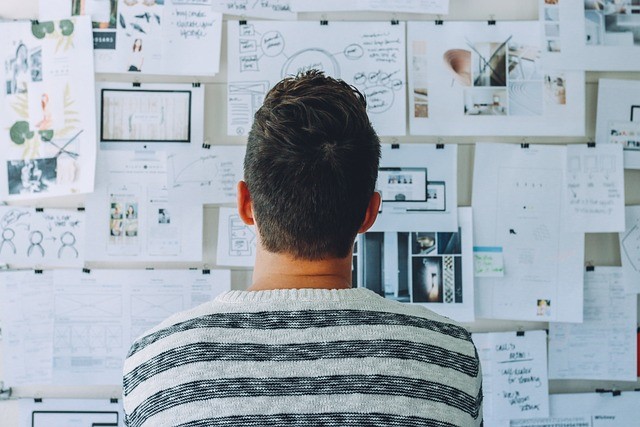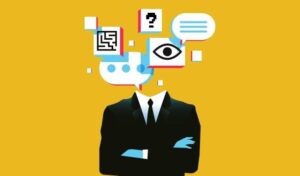Types of Design and Their Applications
Design is an integral part of our daily lives, shaping our experiences with the physical and digital world. From the clothes we wear to the websites we browse, design influences our perceptions, emotions, and interactions. This comprehensive guide explores the diverse Types of Design and Their Applications, providing valuable insights for design professionals, entrepreneurs, graphic designers, interior designers, marketing and branding experts, and anyone interested in understanding the power of creative design.
Introduction: The Multifaceted World of Design
Design is more than just aesthetics; it’s about problem-solving, communication, and creating functional and meaningful solutions. Understanding the different Types of Design is crucial for appreciating its impact and leveraging its potential. This guide will provide a clear overview of various Design Styles and their practical applications.
What is Design? A Broad Perspective
Design is the process of creating something new, whether it’s a physical product, a digital interface, or a visual communication piece. It involves a combination of creativity, technical skills, and an understanding of user needs.
Types of Design and Their Applications
Here are some of the most prominent Types of Design:
-
Graphic Design:
- Graphic Design is the art of visual communication through the use of typography, imagery, and symbols.
- Key Applications:
- Branding (Logos, Brand Guidelines): Creating visual identities for businesses and organizations.
- Marketing Materials (Brochures, Flyers, Posters): Designing print and digital marketing collateral.
- Web Design (Visual Elements): Creating visual elements for websites and web applications.
- Packaging Design: Designing packaging for products.
- Editorial Design (Magazines, Books): Designing layouts for print and digital publications.
- Example: A graphic designer might create a logo for a new startup, design a marketing brochure for a product launch, or create the visual elements for a website.
-
Web Design:
- Web Design focuses on creating user-friendly and visually appealing websites and web applications.
- Key Aspects:
- User Interface (UI) Design: Designing the layout, navigation, and interactive elements of a website.
- User Experience (UX) Design: Focusing on the overall user experience and ensuring that the website is easy to use and navigate.
- Responsive Design: Designing websites that adapt to different screen sizes and devices.
- Example: A web designer might create the layout and visual elements for an e-commerce website, ensuring that it is easy for users to browse products, add them to their cart, and complete the checkout process.
-
Interior Design:
- Interior Design focuses on creating functional and aesthetically pleasing interior spaces.
- Key Considerations:
- Space Planning: Optimizing the use of space within a building.
- Color and Material Selection: Choosing appropriate colors, materials, and finishes.
- Furniture and Fixture Selection: Selecting appropriate furniture, lighting, and other fixtures.
- Example: An interior designer might design the interior of a home, office, or retail space, considering factors such as functionality, aesthetics, and budget.
-
Product Design:
- Product Design focuses on designing physical products that are both functional and aesthetically pleasing.
- Key Stages:
- Conceptualization: Generating ideas for new products.
- Prototyping: Creating physical or digital prototypes of products.
- Testing and Refinement: Testing prototypes and making improvements based on feedback.
- Example: A product designer might design a new smartphone, a piece of furniture, or a household appliance.
-
Industrial Design:
- Industrial Design focuses on the design of products for mass production. It considers factors such as functionality, aesthetics, manufacturing processes, and user experience.
- Example: An industrial designer might design a car, a medical device, or a piece of electronic equipment.
-
Fashion Design:
- Fashion Design focuses on designing clothing and accessories.
- Key Aspects:
- Textile Selection: Choosing appropriate fabrics and materials.
- Pattern Making: Creating patterns for garments.
- Garment Construction: Constructing garments using various techniques.
- Example: A fashion designer might design a new line of clothing for a specific target market.
-
User Experience (UX) Design:
- UX Design focuses on improving the overall user experience with a product, service, or system.
- Key Activities:
- User Research: Understanding user needs and behaviors.
- Usability Testing: Testing products or services with users to identify areas for improvement.
- Information Architecture: Organizing information in a clear and logical way.
- Example: A UX designer might conduct user research to understand how people use a mobile app and then use that information to improve the app’s design and functionality.
-
User Interface (UI) Design:
- UI Design focuses on the visual elements and interactive components of a user interface.
- Key Elements:
- Layout
- Typography
- Color
- Imagery
- Interactive elements (buttons, menus, forms)
- Example: A UI designer might design the layout and visual elements for a website, ensuring that it is visually appealing and easy to navigate.
These represent diverse Design Styles and showcase the breadth of Design Applications.
Design Trends to Watch
Staying up-to-date with current Design Trends is essential for creating relevant and impactful designs. Some key trends include:
- Minimalism: Clean lines, simple layouts, and a focus on functionality.
- Bold Colors and Typography: Using vibrant colors and expressive typography to create eye-catching designs.
- Accessibility: Designing products and services that are accessible to people with disabilities.
- Sustainability: Designing products and services that are environmentally friendly.
Keeping up with these trends is crucial for Creative Design.
Design Applications Across Industries
- Technology: User interface design, user experience design, and product design are crucial for creating successful software applications and hardware devices.
- Retail: Interior design, packaging design, and visual merchandising play a key role in creating appealing retail environments and attracting customers.
- Healthcare: User experience design and product design are essential for creating user-friendly medical devices and healthcare applications.
- Education: Instructional design and user experience design are used to create engaging and effective learning experiences.
These examples illustrate the broad range of Design Applications.
Actionable Advice for Different Audiences
- Design Professionals: Continuously develop your skills and stay up-to-date with the latest design trends and technologies.
- Entrepreneurs: Understand the importance of design in creating successful products and services.
- Graphic Designers: Focus on developing strong visual communication skills and creating impactful designs.
- Interior Designers: Create functional and aesthetically pleasing interior spaces that meet the needs of their clients.
- Marketing and Branding Experts: Leverage design to create strong brand identities and effective marketing campaigns.
This advice provides targeted guidance for various professionals involved in design-related fields.
Tools and Technologies Used in Design
A wide range of tools and technologies are used in different design disciplines, including:
- Adobe Creative Suite (Photoshop, Illustrator, InDesign): Used for graphic design, image editing, and page layout.
- Sketch, Figma, Adobe XD: Used for UI/UX design and prototyping.
- AutoCAD, Revit: Used for architectural and interior design.
- SolidWorks, Fusion 360: Used for product design and 3D modeling.
Familiarity with these tools is essential for many Design Professionals.
Shaping the World Through Design
Design plays a vital role in shaping our world, influencing how we interact with products, services, and environments. By understanding the different Types of Design and Their Applications, we can appreciate the power of Creative Design and leverage it to create meaningful and impactful solutions. This guide has provided a comprehensive overview of various Design Styles and their practical applications.
Whether you are a seasoned designer, an aspiring entrepreneur, or simply someone interested in the world of design, understanding these key concepts will empower you to appreciate the value of Visual Design and its transformative potential. Remember, design is a continuous process of learning, adapting, and innovating. By staying curious and embracing new technologies and Design Trends, you can contribute to creating a more beautiful, functional, and user-friendly world.






